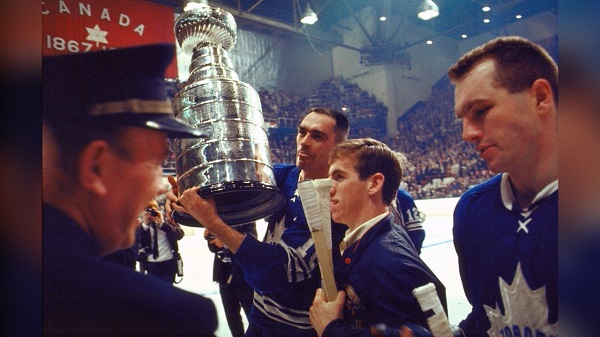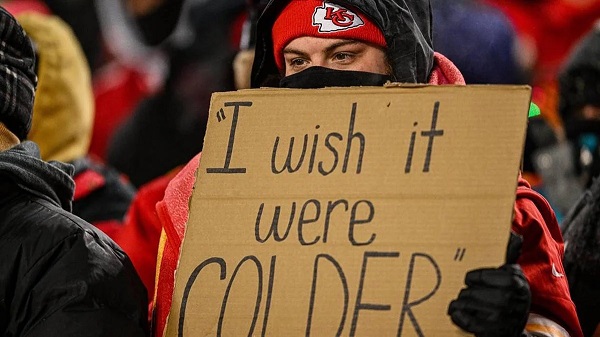Sports
Odds Are Good Your Team Will Never Win A Title In Your Lifetime

“There’s no failure in sports. There’s good days, bad days, some days you’re able to be successful, some days you’re not. Some days it’s your turn, some days it’s not your turn. That’s what sports is about. You don’t always win. Some other people’s going to win. And this year somebody else is going to win. Simple as that.” Milwaukee star Giannis Antetokounmpo on losing in the playoffs last spring.
Antetokounmpo was simply stating the obvious math. In a time where leagues are 30 or 32 teams, media expectations are rooted in the odds of a 12- or 14-team league when playoffs were just two rounds. There’s luck and sheer numbers working against your team. Fans follow this standard that your team must win titles or be forever damned. The closer a club gets the greater the expectations.

Still reporters demanded accountability from the man who’d helped the Bucks to the 2021 NBA title. But Giannis turned it back on reporter Eric Nehm . “Oh my god. You asked me the same question last year, Eric. Do you get a promotion every year on your job? No, right? So, every year your work is a failure? Yes or no? No. Every year you work, you work toward something, toward a goal, right? Which is to get a promotion, to be able to take care of your family, provide a house for them or take care of your parents. It’s not a failure, it’s steps to success.
He has a point. In the modern age failure is relative. The traditional poster boys for “failure” are the Buffalo Bills from 1992 to 1996. After wining the AFC every one of those years Marv Levy’s team went to four Super Bowls and lost every one of them, branding them forever in the media and fan perspective as losers.
No other team has ever made four consecutive Super Bowls. Kansas City made four title games in five years. None have made it to three straight Super Bowls. The Detroit Lions have zero Super Bowl appearances before this season and have won just three times in the postseason since their NFL championship in 1957.
Even in a league with 28 teams, the Bills’ feat was remarkable. Unprecedented. And yet, because they lost all four consecutive championship games they’re an avatar of failure. When compared to dynasties such as the 1970s Miami Dolphins (two Super bowls) or the 1980s-90s San Francisco 49ers (5 Super Bowls) the Bills are seen as chokers or losers. The New England Patriots’ winning six SBs from 2002-2016 are the real outlier.)

The current poster boys for hockey failure are the Toronto Maple Leafs, without an NHL championship since 1967. That year was also the last time the Leafs appeared in the Final series. They have since made the final four five times, the most recent being 2002 when Boston dispatched them. Most fans of the team, as well as most hockey fans, see them as a punchline. But in these times of bloated leagues, a semifinal appearance is the equivalent of making it to the Finals in the six-team league of 1967.

Fans and contemporary media still think they we are living in a time when every club, given a little luck and a good draft, will reward its fans with a champions parade. That’s what the mania for parity and salary caps was about. Balancing the draft would give everyone a shot at a star who’d take them to the holy land. But with 30 or 32 teams that formula doesn’t work. There’s just one Stanley Cup. One Lombardi Trophy. And 31 disappointed fan bases.
Where the 1955-60 Montreal Canadiens, 1976-80 Habs, 1981-84 New York Islanders and 1984-1988 Edmonton Oilers defined clutch with multiple Cups in consecutive or near-consecutive seasons, today’s gold standard is closer to two and done. Detroit won four Cups but it was between 1997 and 2008. Chicago won three Cups in five years (2010-2015). Pittsburgh had three Cups in eight years (2009-2017) .
Basketball (with its smaller rosters) still has super teams dominated by LeBron James and Steph Curry. But the NFL and MLB lack the traditional domination by repeat champions. Since 2000 only the San Francisco Giants have three titles and those were from 2010-2014). While the big-budget Dodgers and Yankees have been perennial playoff teams they haven’t dominated the current 30-team league as they did in the 1970s-1990s.
It’s likely that with the NHL talking about 36 teams fans of many of those clubs will not see their team win a title in their lifetime. Parity will sound nice coming from the league, but after decades of coming up short, the odds say fans shouldn’t be praying for a title.
As Giannis says, we need a new standard of success. Michael Jordan’s great accomplishment wasn’t simply the title he brought to the Bulls, it was the totality of seasons in which his club was a viable contender. “There’s always steps to it,” said Antetokounmpo. “Michael Jordan played 15 years, won six championships. The other nine years was a failure? That’s what you’re telling me?
In our book Ice Storm on the 2008-2013 Vancouver Canucks, GM Mike Gillis made the same point when describing his formula for success with a team that has gone longest without a Cup. Understanding the place luck and injuries play, he said his description for success was having a contending team that had a puncher’s chance every year and, eventually, a title winner. Yes, there would be down years. On average, however, it would reap tiles and profits for owners.

But Gillis’ owner, Francesco Aquilini, who’d originally subscribed to this formula, panicked when a near-miss for the Cup in 2011 was followed by two first-round eliminations in subsequent years. The bleating of disappointed season-ticket holders and the criticism from hostile media moved Aquilini to replace Gills with local hero Trevor Linden. The Canucks then missed the playoffs in eight of the next eleven seasons.
Setting too high a bar is a recipe for failure to any management. Explaining the rarity of a semifinal appearance— as Giannis did— can lessen the stress. But until media cite a more realistic standard it’s unlikely anyone will cut teams losing in the playoff any slack. They may well ask what’s in it for them when owners cash a fat expansion fee and push a Cup that much further away.
Bruce Dowbiggin @dowbboy is the editor of Not The Public Broadcaster A two-time winner of the Gemini Award as Canada’s top television sports broadcaster, he’s a regular contributor to Sirius XM Canada Talks Ch. 167. His new book Deal With It: The Trades That Stunned The NHL And Changed hockey is now available on Amazon. Inexact Science: The Six Most Compelling Draft Years In NHL History, his previous book with his son Evan, was voted the seventh-best professional hockey book of all time by bookauthority.org . His 2004 book Money Players was voted sixth best on the same list, and is available via brucedowbigginbooks.ca.
Bruce Dowbiggin
Wayne Gretzky’s Terrible, Awful Week.. And Soccer/ Football.

Inquiring minds want to know: Why did FIFA (Federation of International Fraud Artists) award American president Donald Trump a new “Peace Prize” at the Washington D.C. draw for the June/ July tournament? The usual suspects are paralyzed with rage. Everyone else is laughing at the kabuki theatre stunt.
The short answer is that if you were FIFA and you were receiving a reported billion or more dollars from the U.S. and the Canadian/ Mexican cities hosting the 48-team tournament you’d give the host more than a bottle of wine and flowers as a thank-you. Thus the ugly statue and the Boy Scout medal. The obsequious awarding of the prize and match medal were proportionate to the greed of FIFA in extorting the cash.
(America’s fainting goat media immediately complained about unearned awards for little virtue, forgetting as usual that the Nobel folks gave Barack Obama a Peace Prize after nine months in the White House for simply being a black man.)
Trump getting a peace award from FIFA, the most corrupt sports body in the sports world, is mint, however. You can’t write this stuff. (They should give it to him on a speed boat heading across the Caribbean.) The Donald then playfully suggested that Americans leave the name football to the soccer folks because, you know… feet and a ball. More outrage from NFL fans.
So what was the gift for the two Canadian cities hosting games who have also coughed up plenty? Toronto says its estimated budget is $380 million for six games/ B.C. tax payers are obliged to cough up an estimated $580 million for Vancouver’s five games). For cities with, how shall we say, bigger fish to fry.
Sadly all they got was a little farce in which a delighted PM Mark Carney was allowed to Canada as the first ball to start the picking, evidently unaware that all the balls he had to select from also said Canada. Carney’s joy was tempered when he saw Mexican president Claudia Sheinbaum draw a ball that said “Mexico” while Trump— in on the fix— got one entitled “United States”.

In a final attempt to curry favour with the fleeced nations FIFA boss Gianni Infantino gathered the world leaders for a painful onstage selfie, marking the first time Trump and Sheinbaum had ever met in the (orangey) flesh. Call it National Lampoon’s Soccer Vacation.
Having exhausted itself with the peace prize falderol FIFA evidently forgot to put any more thought into the rest of the 55-minute run-up to the draw. While soccer/ footie fans around the world ground their teeth in impatience the organizers presented a combination Eurovision/ People’s choice Awards ordeal of failed cues, untranslated interviews (the Spanish translator showed up about 30 minutes late) and pregnant pauses.
Host Heidi Klum’s stunning gold dress nearly made up for her wooden repartee with comedian Kevin Hart (“not sure why I’m here”) and co-host Rio Ferdinand, former star English defender who, alas, never won the WC. But that was all an appetizer for the real low point, the introduction of global brand stars to pick the draw. NFL legend Tom Brady, NBA legend Shaquille O’Neal and NHL… er, player Wayne Gretzky.
Their task, hectored by the hosts, was to draw a ball, unscrew the thing, withdraw a nation’s name and so on. While there may have been some tension in the audience there was no appreciation of that on the screen as more clunking dialogue and curious pronunciations (Ferdinand kept referring to Group “Haitch”) landed dead on the floor.
The nadir of the ceremony—indeed of his career— was Gretzky’s contribution. Brady and O’Neal had managed to survive their task of unscrewing the ball and pronouncing a name, but Gretzky was brought low by the stage business of the balls and the nations he was forced to announce.

The clearly flustered Gretz (he insisted he’d practiced all morning) wrestled manfully with the balls. Finally the producers went with a long shot of him fumbling in the dark. Then he topped that. Gretzy apparently thinks there are countries called “North Mack-a-donia” and “Cur-ack-ow.” Other stabs at geography were almost as tortured.
Bitter Canadians could put up with him sucking up to Trump (he was mentioned as being in the crowd at the DC Xmas tree lighting) but failing geography is unforgivable. The week that started with Gretzky in a photo golfing at POTUS’s Jupiter, Florida, golf course was ending with him pummelled for his abuse of nations with different-sounding names. The Wayne Gretzky Center For Kids Who Want To Talk Good.
The moral: Never send a centre to do a netminder’s job. Makes you understand why Bobby Orr has laid low since his Trump endorsement came out.
With that bracing date with immortality disposed of the draw proceeded. We had been pounded for an hour about how great the tournament was, and finally footy fans got what they wanted. As a host Canada got a bye into the field. Their reward is playing the tenacious Swiss and, gulp, probably Italy, which is forced to qualify after playing with their food for too long. (Insert your Stanley Tucci joke.)
If not Italy then one of Wales, Bosnia and Herzegovina or Northern Ireland. Oh, right Qatar is in there too as fodder. Been nice knowing you, Canada. The Americans somehow drew a creme puff quartet of Australia, Paraguay and Slovakia, Kosovo, Turkey or Romania. Money can’t buy you love, but it can get you a warm hug from FIFA.
In the end it’ll be one of Brazil, Argentina, Germany or France for the final in the NJ Meadowlands on July 19. Maybe they’ll have a spelling bee at halftime. Or maybe they’ll bring back Trump for the final game to give him another peace prize. Just don’t ask Gretzky to announce Lothar Matthaus, Bruno Guimaräes or Gabriel Magalhäes.
Bruce Dowbiggin @dowbboy is the editor of Not The Public Broadcaster A two-time winner of the Gemini Award as Canada’s top television sports broadcaster, his new book Deal With It: The Trades That Stunned The NHL And Changed hockey is now available on Amazon. Inexact Science: The Six Most Compelling Draft Years In NHL History, his previous book with his son Evan, was voted the seventh-best professional hockey book of all time by bookauthority.org . His 2004 book Money Players was voted sixth best on the same list, and is available via brucedowbigginbooks.ca.
Business
Taxpayers Federation calls on politicians to reject funding for new Ottawa Senators arena

The Canadian Taxpayers Federation is calling on the federal, Ontario and municipal governments to publicly reject subsidizing a new arena for the Ottawa Senators.
“Politicians need to stand up for taxpayers and tell the Ottawa Senators’ lobbyists NO,” said Noah Jarvis, CTF Ontario Director. “Prime Minister Mark Carney, Ontario Premier Doug Ford and Ottawa Mayor Mark Sutcliffe all need to publicly reject giving taxpayers’ money to the owners of the Ottawa Senators.”
The Ottawa Citizen recently reported that “the Ottawa Senators have a team off the ice lobbying federal and provincial governments for funds to help pay the hefty price tag for a new arena.”
The Ottawa Senators said they don’t intend on asking the city of Ottawa for taxpayer dollars. However, the Ottawa Citizen reported that “it’s believed Senators’ owner Michael Andlauer would like a similar structure to the [Calgary] arena deal.” The Calgary arena deal included municipal subsidies.
As of December 2024, the Ottawa Senators were worth just under $1.2 billion, according to Forbes.
Meanwhile, both the federal and Ontario governments are deep in debt. The federal debt will reach $1.35 trillion by the end of the year. The Ontario government is $459 billion in debt. The city of Ottawa is proposing a 3.75 per cent property tax increase in 2026.
“Governments are up to their eyeballs in debt and taxpayers shouldn’t be forced to fund a brand-new fancy arena for a professional sports team,” said Franco Terrazzano, CTF Federal Director. “If the owners of the Ottawa Senators want to build a fancy new arena, then they should be forced to fund it with ticket sales not tax hikes.”
-

 Community2 days ago
Community2 days agoCharitable giving on the decline in Canada
-

 Alberta22 hours ago
Alberta22 hours agoAlberta’s huge oil sands reserves dwarf U.S. shale
-

 Alberta1 day ago
Alberta1 day agoCanada’s New Green Deal
-

 Bruce Dowbiggin2 days ago
Bruce Dowbiggin2 days agoNFL Ice Bowls Turn Down The Thermostat on Climate Change Hysteria
-

 Energy18 hours ago
Energy18 hours agoCanada’s sudden rediscovery of energy ambition has been greeted with a familiar charge: hypocrisy
-

 armed forces1 day ago
armed forces1 day agoOttawa’s Newly Released Defence Plan Crosses a Dangerous Line
-

 Business24 hours ago
Business24 hours agoCOP30 finally admits what resource workers already knew: prosperity and lower emissions must go hand in hand
-

 Energy2 days ago
Energy2 days agoEnergy security matters more than political rhetoric







